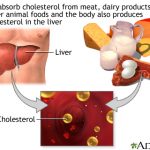Oat Bran: Digestion & Health Benefits
Many doctors advise that ne of the most important foods you can eat to preserve good health is oat bran. Digestion issues and other health conditions can often be greatly improved by regularly including oat bran as part of a balanced diet. Oat bran is also beneficial for weight loss and regulating cholesterol. And a study published in the American Journal of Epidemiolog indicates that people who consume two or more servings a day or oat bran or other whole grains are less likely to develop pancreatic cancer than people who consume less. This is significant because pancreatic cancer is one of the deadliest, most aggressive, fast moving cancers, with among the highest mortality rates.
Oat Bran: Digestion Aid
Bran is the outer fiber covering or “husk” of oats and other whole grains. Unfortunately, this nutrient-rich husk is removed from any grains that have been refined such as white flour or oatmeal. This refinement process depletes much of the fiber, minerals and vitamins that are essential for healthy digestive function. In other words, it literally strips away the best, healthiest part of the grain.
Unlike oatmeal that has all of these nutrients removed during the refining process, Oat bran is not processed or refined and therefore contains all of that important fiber, and those vitamins and minerals – all of the nutrition is still there in oat bran. Digestion benefits because all of the soluble fiber in oat bran absorbs water, forming a gel-like substance in the digestive tract. According to the Mayo Clinic, soluble fiber from oat bran is excellent for digestion because it slows down the digestion process for improved nutrient absorption and bowel function – but only when oat bran is used in moderation.
This is a key concept that many people who start using oat bran for digestion sometimes overlook. Even many doctors who advise their patients to begin consuming oat bran for digestion improvements overlook this important factor.
While oat bran is very beneficial for healthy digestion, large amounts of fiber can cause digestion issues like abdominal cramping, gas, bloating, diarrhea and pain. The sensation can be quite uncomfortable; however, it eventually goes away, as you become accustomed to eating more fiber. Too much fiber, however, can interfere with the body’s uptake of minerals, including zinc, iron, calcium and magnesium, states Medline Plus. Yet, high-fiber foods often have a high mineral content which ensures that high amounts of fiber will not cause a mineral deficiency.
Digestion issues that are pre-existing always need to be considered when adding more fiber to the diet, whether it is oat bran or any other. If symptoms flare up, back down from the fiber and then try again using a little less once symptoms improve until you find that sweet spot.
He was admitted to a Norwalk hospital complaining of nausea, frequent vomiting and stomach pain, and doctors discovered a blockage in his small intestine. Surgical removal of two-foot long masses of undigested oat bran fiber was required.
The man had undergone intestinal surgery six years before, which contributed to the problem, the doctors said. So doctors advise that anyone who has previously had bowel surgery use extra caution when consuming oat bran.
Experts suggest increasing the amount of bran in one’s diet slowly, over a period of four to six weeks, and suggest 10 to 25 grams of bran fiber a day as being sufficient for most people to derive the benefits.
The bottom line is, when introducing more fiber into your diet, including oat bran, digestion will benefit but you need to go slow and allow your body to adjust gradually to the increased amount of fiber.
Use Caution With Diverticulitis and Oat Bran
Diverticulitis is an often very painful digestion disorder that occurs when little pouches called diverticula develop in the intestinal lining and become inflamed. While a low-fiber diet may be the underlying cause of diverticulosis formation in the first place, however, one you have the condition, high-fiber foods such as peas, beans, coarse grains, corn, dried fruits, pickles and cucumbers can actually make diverticulitis symptoms worse.
Symptoms of Diverticulitis include abdominal bloating and left side soreness, fever and chills, nausea, vomiting, blood in stool and unwillingness to eat. When a diverticulitis attack occurs, a liquid diet and then, reintroduction of soft foods after a few days can ease the symptoms. So if you have diverticulitis, go slow and exercise caution when introducing oat bran – and keep your consumption to no more than two servings per day, if you are able to tolerate that much. My mom has Diverticulitis (which is ironic since she always ate a very healthy diet, including the correct amount of fiber intake), and she can absolutely not tolerate most high fiber grains including oat bran and psyllium. In fact grains these cause very painful Diverticulitis attacks for her. What we have found works amazingly well for her as a good source of daily fiber is Apple Fiber. She tolerates it extremely well and her digestion works better than ever when she takes it. If she runs out, the trouble starts. Apple Fiber can be very difficult to find. The only producer of it that I know of is Now Foods (a very well known and well reputed manufactuer of nutritional supplements), and the best place I know of to buy it is iHerb. I have tried to find it in my local area and evern stores that carry many of the Now brand products do not have it. I have also looked at other online sellers and their price is generally much higher, or the shipping costs are crazy (unlike at iHerb). The apple fiber costs only $6 at iHerb for a back that will last a month or more.
Diabetes Control
The soluble fiber in oat bran also helps to keep your blood sugar levels balanced by slowing the digestion of carbohydrate foods in the digestive tract and reducing the rate at which glucose is absorbed into the bloodstream. According to a study published in the “Journal of the American Dietetic Association”, eating oat bran and other foods rich in soluble fiber may help prevent and treat diabetes because blood glucose levels are better controlled. Oat bran may also help increase sensitivity to the hormone insulin, which is needed to transport glucose from the blood to your cells where it is converted to energy.
Reduces Cholesterol
Adding oat bran to your diet may also help lower high cholesterol levels.
Oat bran contains soluble fiber, which reduces the unhealthy fats known as “bad” cholesterol (LDL cholesterol) by absorbing cholesterol before it can flow into the bloodstream according to the National Institute of Health.
According to the National Institute of Health this occurs because the soluble fiber in oat bran binds with cholesterol in the intestines and removes it as waste matter before it can be absorbed into the blood. Reducing cholesterol from the blood can help reduce the risk of dangerous plaque buildup in the arteries that leads to heart disease and stroke. The Mayo Clinic recommends eating a minimum of 5 to 10 grams of soluble fiber a day to decrease both your LDL and total cholesterol levels. Eating 1 1/2 cups of cooked oatmeal gives you 6 grams of fiber.
When compared to oatmeal, on average oat bran has 50% more fiber and soluble fiber, making it much more useful for the body.
May Help Prevent Pancreatic Cancer
As mentioned earlier in this article, but its well work repeating so that the point is not lost, a study published in the American Journal of Epidemiolog indicates that people who consume two or more servings a day or oat bran or other whole grains are less likely to develop pancreatic cancer than people who consume less. This is significant because pancreatic cancer is one of the deadliest, most aggressive, fast moving cancers, with among the highest mortality rates.
Weight Loss
High-fiber foods like oat bran are helpful for weight loss because they help you to feel full.
Oat bran is effective for weight loss because when it enters the digestive tract its soluble fiber absorbs water and forms a gel-like substance, creating that feeling of fullness. Oat bran absorbs on average 25 times its volume in liquid. Just a tablespoon of oat bran, about half an ounce, forms a 13 ounce ball in the stomach. This results in you eating less. Because you feel full, eating oat bran makes dieting much easier.
In addition to that, the very process of oat bran digestion slows down the sugar assimilation and removes calories from the body by reducing the absorption of dietary fat, while keeping your blood sugar levels low and stable.
The Mayo Clinic also notes that fiber-rich foods like oat bran require more chewing and take longer to digest, giving your brain the chance to signal that you are no longer hungry before you overeat. Additionally, oat bran helps keep your blood glucose levels stable and is rich in nutrients such as B vitamins, which aid in energy production – which is very helpful when you are counting calories for weight loss.
What Else You Should Know
Make sure that when you are buying oat bran, the package says 100% oat bran and check the ingredients list on the label to ensure that it does not contain any other ingredients.
Keep in mind that oat bran is different from steel cut or rolled oats – make sure you don’t confuse them (or you’ll be missing out on the most valuable fiber and nutrients which have been stripped away, as discussed above).
Its recommended that you consume 1.5 – 3 tablespoons per day of oat bran. Digestion issues can impact how well your body reacts to oat bran, so listen to your body and moderate the amount of oat bran you eat according to what you tolerate well.
Oat bran contains about 50% more fiber and soluble fiber than oatmeal, making it more effective at lowering cholesterol and helping digestion. It also has more protein, calcium, iron, thiamin, phosphorus, riboflavin, magnesium, and zinc.
The main structural difference is that oatmeal (typically rolled oats) is whole grain, while oat bran is just the bran of the oat.
Finally, because oat bran is creamier (due to the finer texture of the product), it satiates hunger more than oatmeal.
Does gluten-free oat bran exist and where can I find it?
Gluten-free oat bran IS AVAILABLE BUT its harder to find than regular oat bran. It can be found in some major supermarket chains, but it is more commonly sold in specialized natural foods stores. You can also find it online from a number of reputable sellers.







Leave a Reply